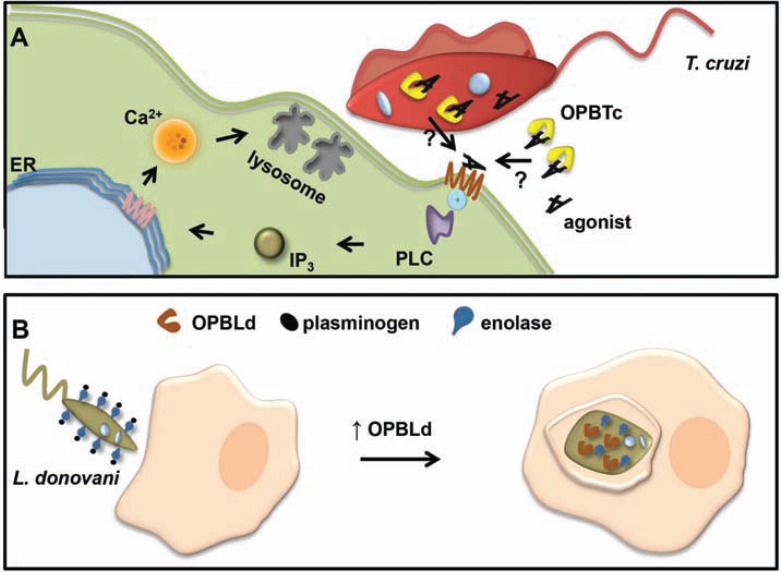Fig. (5).
Schematic representation of T. cruzi and L. donovani OPB role in host cell invasion. (A) OPBTc cleaves an inactive precursor to generate an active Ca2+ agonist that binds to the host cell receptor, leading to the formation of inositol triphosphate (IP3) through the activation of phospholipase C and, consequently, to the mobilization of intracellular [Ca2+]. It is not yet clear if OPBTc interacts with its substrate inside or outside the parasite. ER, endoplasmic reticulum; PLC, phospholipase C; IP3, inositol triphosphate. Adapted from [50]. (B) During infection, Leishmania surface enolases bind to host plasminogen on the parasite cell surface. This interaction seems to help parasite entry into macrophages. As the parasite begins differentiating into amastigotes, OPB is up-regulated and acts on enolase and plasminogen clearance from the parasite surface, facilitating undetected replication of the amastigotes within the macrophage. Adapted from [107].

